Radioactivity in the Baltic Sea
Finland has been a forerunner in the monitoring of radioactivity in the Baltic Sea. Radioactivity surveys were initiated as early as the end of the 1950s by the Radiation and Nuclear Safety Authority’s (STUK) predecessor Institute of Radiation Physics in co-operation with the Finnish Institute of Marine Research.
An impulse for these activities was given by the above-ground nuclear weapon tests carried out in Novaya Zemlya in the 1950s and 1960s. Gradually the surveillance expanded into co-operation between all the Baltic Sea countries. The fallout from nuclear weapon tests was distributed relatively evenly throughout the Baltic Sea catchment basin, containing mainly cesium-137 (Cs-137) and strontium-90 (Sr-90).
In 1986, the radioactive plume from Chernobyl was carried by winds directly towards the Baltic Sea, causing a fallout that was distributed quite unevenly. The Baltic Sea received more of the Chernobyl fallout than other seas in the world (e.g., the Black Sea, the Mediterranean Sea, the North Sea and the northeast Atlantic). On the basis of the amount of Cs-137 quantity carried in the fallout, the Baltic Sea can be classified as one of the most radioactively contaminated sea regions in the world, together with the Irish Sea.
Other significant sources of radioactivity are the two spent nuclear fuel waste treatment facilities: Sellafield in the UK and La Hague in France. The proportion of other nuclear facilities in the Baltic Sea catchment basin in the activity of Cs-137 and Sr-90 is less than one per cent.
Cesium-137
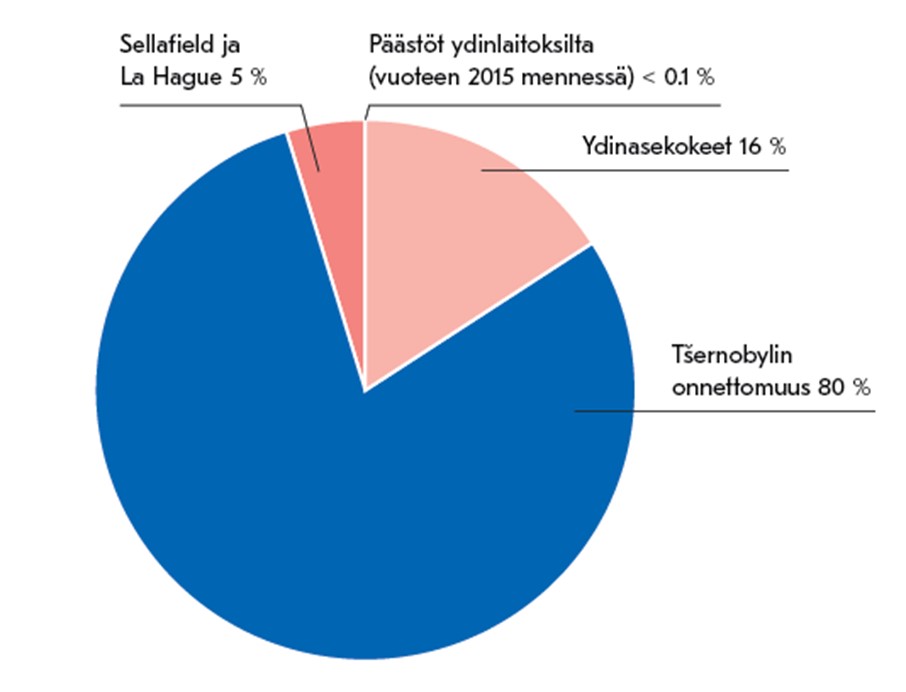
Strontium-90
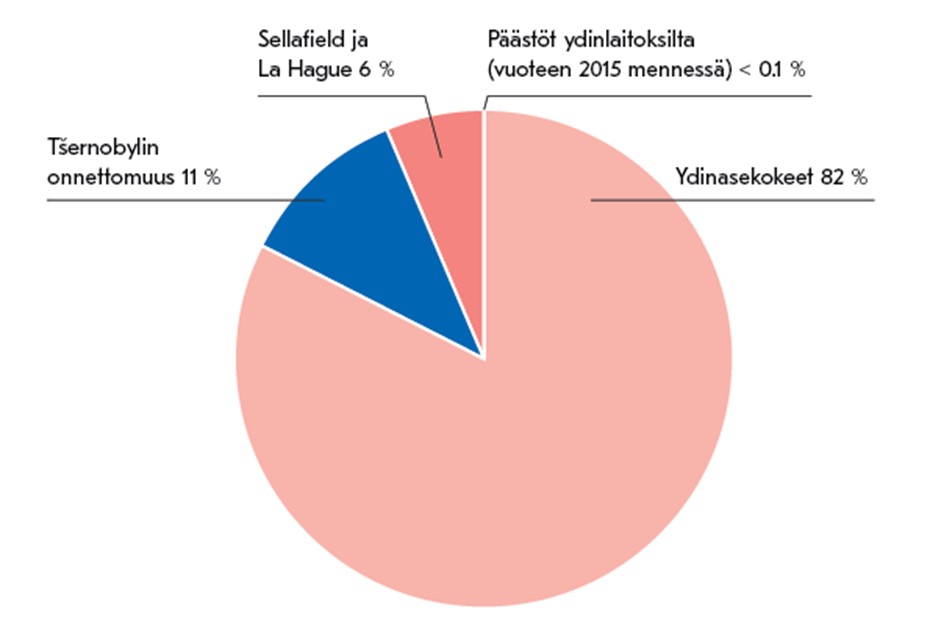
During the more than thirty years that have passed since the accident, cesium has disappeared from the water of the Baltic Sea relatively fast, as it has sunk to the bottom with sedimenting material. While the highest Cs-137 concentrations measured immediately following the accident at some locations in the Gulf of Finland and the Sea of Bothnia were approximately 5,000 becquerels per cubic metre (Bq/m³), in 2022 the concentrations had fallen below one two-hundredth (< 25 Bq/m3). The Gulf of Finland has been cleared somewhat faster than the Sea of Bothnia, as their sedimentation rates are different and water exchange is more efficient between the Gulf of Finland and the actual Baltic Sea.
Cs-137 concentrations of different parts of the Baltic Sea in surface water in 1980–2023
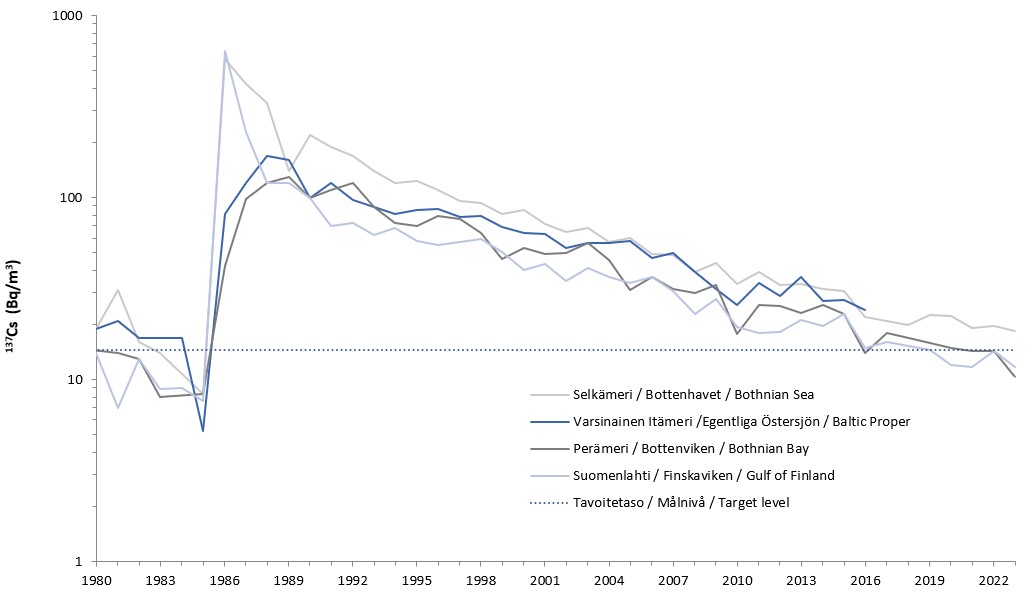
Graph of Cs-137 activity concentrations in surface water in different parts of the Baltic Sea from 1980 to 2022. In the Bothnian Sea, the Baltic Sea, the Gulf of Bothnia and the Gulf of Finland, the concentrations of Cs-137 in surface water increased in the mid-1980s. This was due to the Chernobyl nuclear power plant accident. Concentrations have been declining gradually and are now almost at tolerance levels. The tolerance level is set at the average level detected before the Chernobyl nuclear power plant accident.
At the moment, most of the Cs-137 present in the Baltic Sea is buried in the bottom sediments. The regional distribution of cesium in the bottom sediment is largely in line with the distribution of the Chernobyl fallout.
Cs-137 concentrations in Baltic Sea sediments from 2011 to 2015
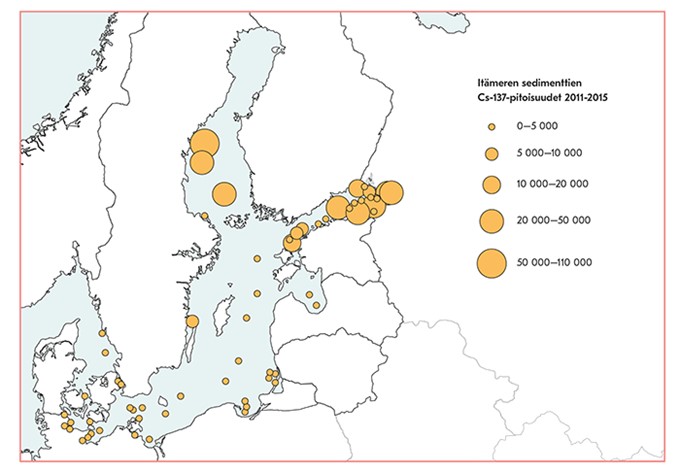
Cs-137 concentrations in Baltic Sea fish were below 10 becquerels per kilogram (Bq/kg) of fresh weight in 2022, clearly lower than in freshwater fish. Therefore, the radiation dose received by Finns from Baltic Sea fish has remained low, being a few thousandths of a millisievert per year.
Cs-137 concentration in Baltic herring in Finnish coastal waters from 1984 to 2023
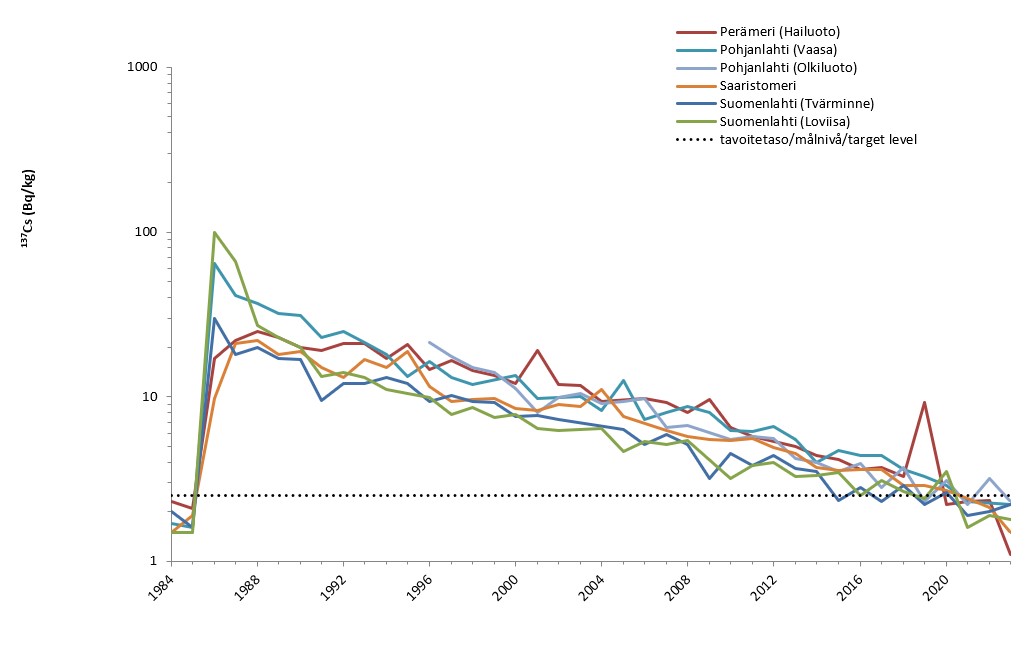
STUK is engaged in international monitoring of radioactivity in the Baltic Sea, carried out in accordance with the recommendation of HELCOM (the Helsinki Commission). The results of the monitoring of radioactivity in the Baltic Sea are also available electronically on the HELCOM website.